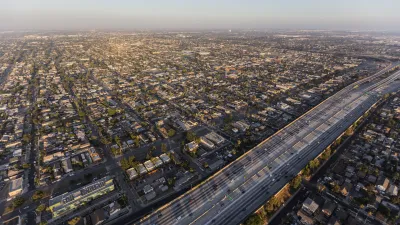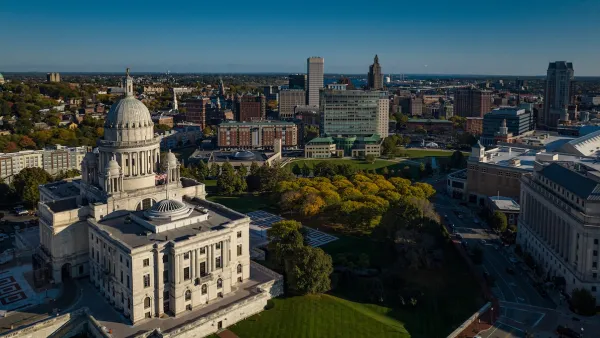A "white supremacist" law that blocks public housing in the state is up for repeal—again.

California leaders hope that in 2020, voters will agree to remove a barrier to public housing construction that has been enshrined in state law for 70 years.
That barrier is Article 34 of the California Constitution, which triggers a popular vote before public housing is built—a requirement unique to California. In a feature for the Los Angeles Times, Liam Dillon details how the amendment has not only diminished California's supply of affordable housing over the decades, but also hindered desegregation efforts throughout the state; shaped policy and finance around housing development; and led to a U.S. Supreme Court ruling that government could legally discriminate against poor people.
State Senator Ben Allen and Los Angeles Mayor Garcetti are among the leaders now pushing to abandon Article 34—calling the rule "anachronistic" and "white supremacist," respectively. If the measure appears on the ballot, it would mark the fourth time voters have been asked to repeal the law since it was first approved in 1950.
So far, it's never come close. But lawmakers hope that 2020 will be different. The last few years have seen voters support multiple tax increases and bond measures to fund affordable housing—and become increasingly likely to say yes to housing subject to their approval.
FULL STORY: A dark side to the California dream: How the state Constitution makes affordable housing hard to build

National Parks Layoffs Will Cause Communities to Lose Billions
Thousands of essential park workers were laid off this week, just before the busy spring break season.

Retro-silient?: America’s First “Eco-burb,” The Woodlands Turns 50
A master-planned community north of Houston offers lessons on green infrastructure and resilient design, but falls short of its founder’s lofty affordability and walkability goals.

Delivering for America Plan Will Downgrade Mail Service in at Least 49.5 Percent of Zip Codes
Republican and Democrat lawmakers criticize the plan for its disproportionate negative impact on rural communities.

Test News Post 1
This is a summary

Test News Headline 46
Test for the image on the front page.

Balancing Bombs and Butterflies: How the National Guard Protects a Rare Species
The National Guard at Fort Indiantown Gap uses GIS technology and land management strategies to balance military training with conservation efforts, ensuring the survival of the rare eastern regal fritillary butterfly.
Urban Design for Planners 1: Software Tools
This six-course series explores essential urban design concepts using open source software and equips planners with the tools they need to participate fully in the urban design process.
Planning for Universal Design
Learn the tools for implementing Universal Design in planning regulations.
EMC Planning Group, Inc.
Planetizen
Planetizen
Mpact (formerly Rail~Volution)
Great Falls Development Authority, Inc.
HUDs Office of Policy Development and Research
NYU Wagner Graduate School of Public Service





























